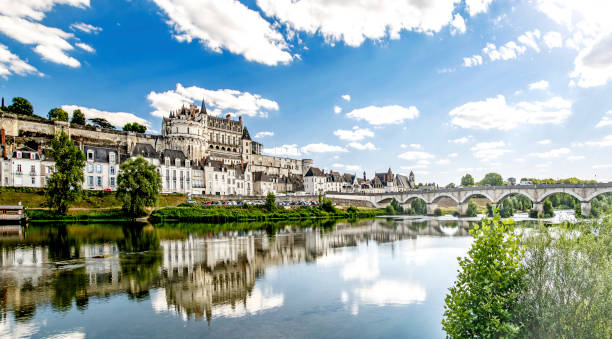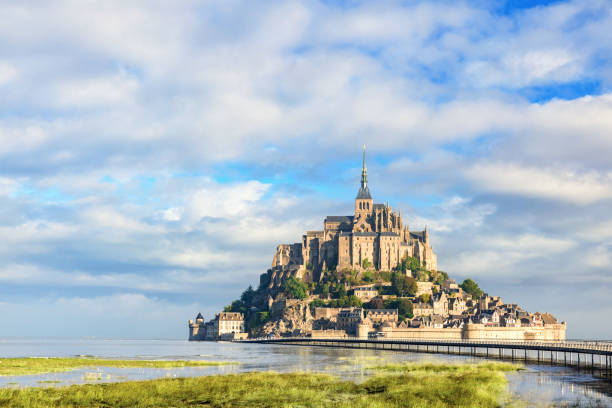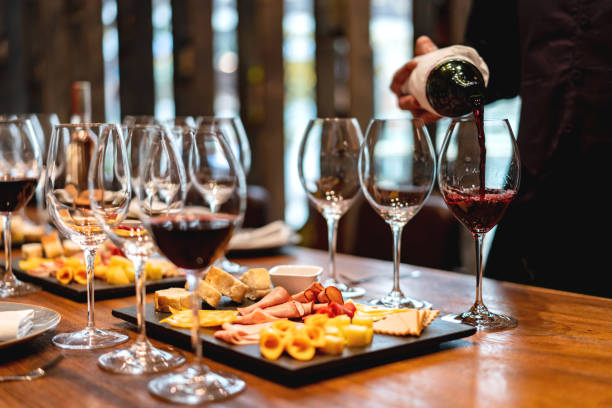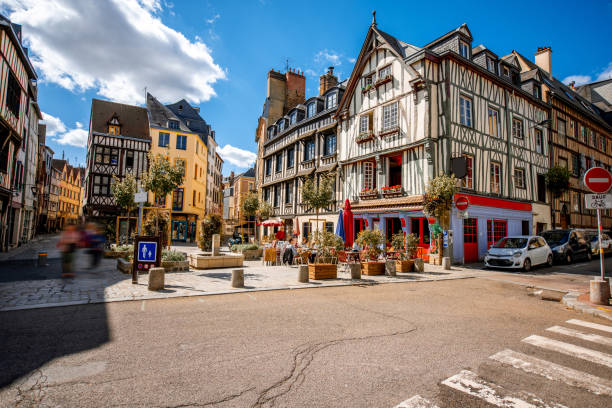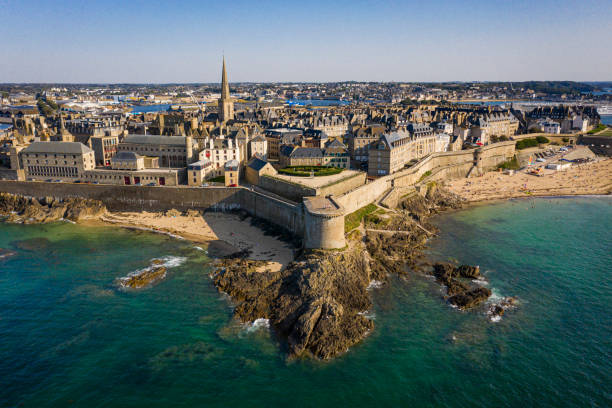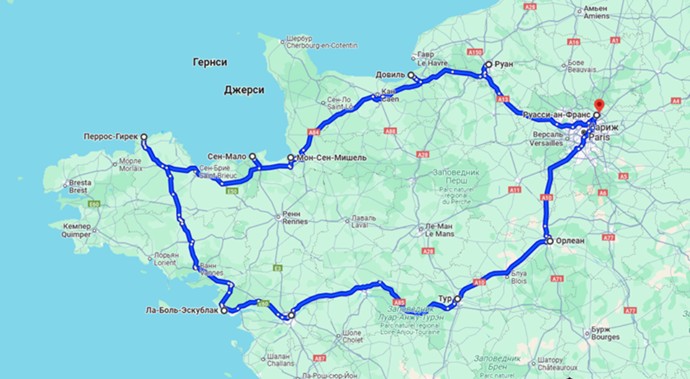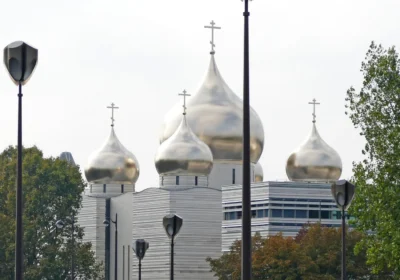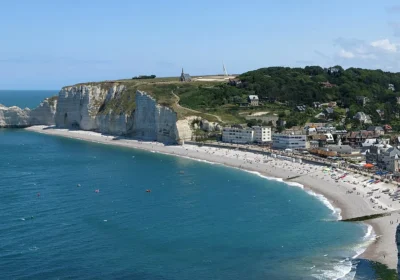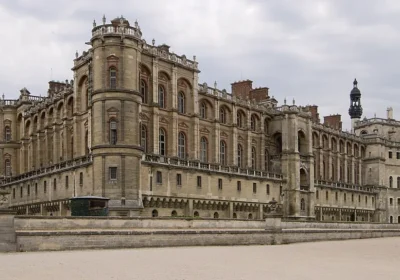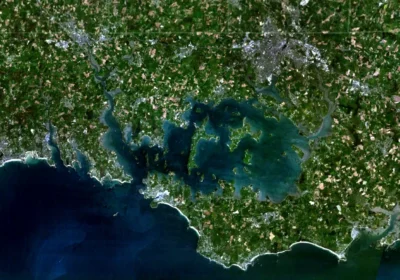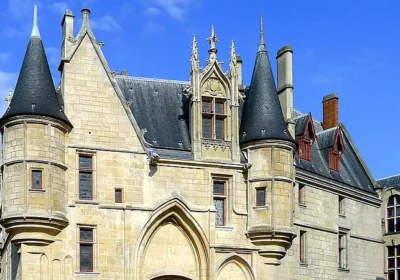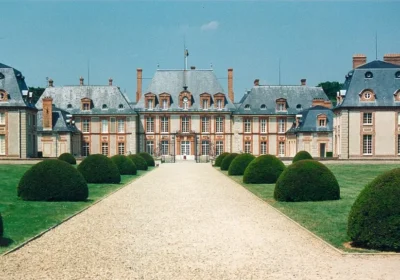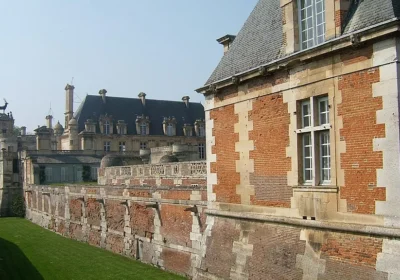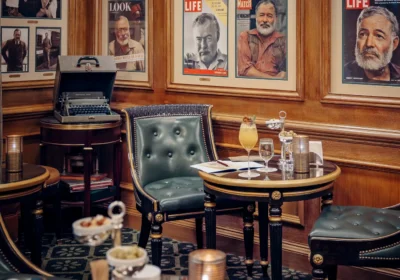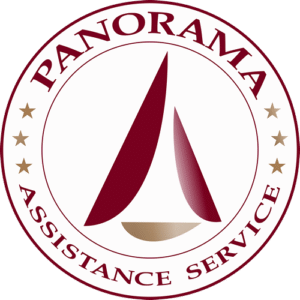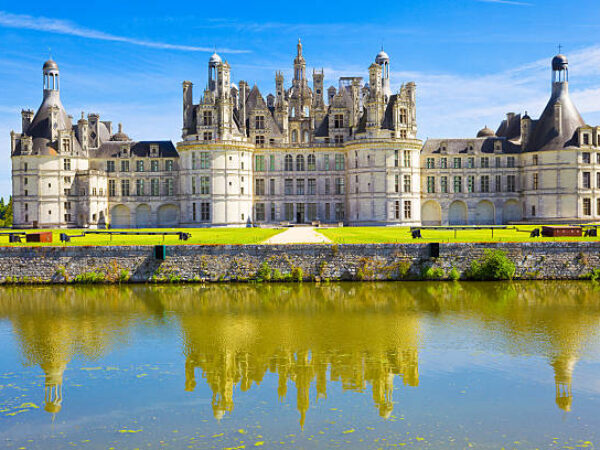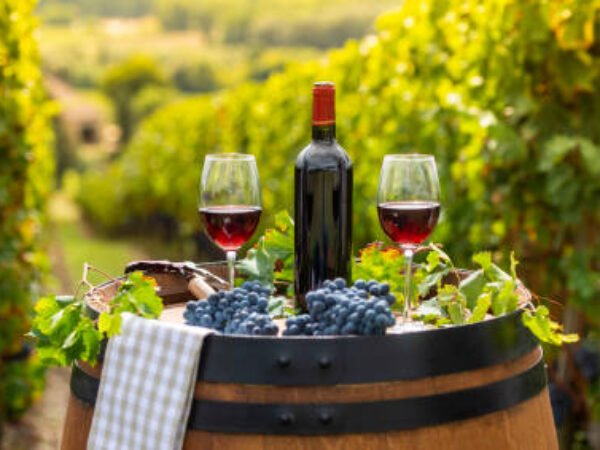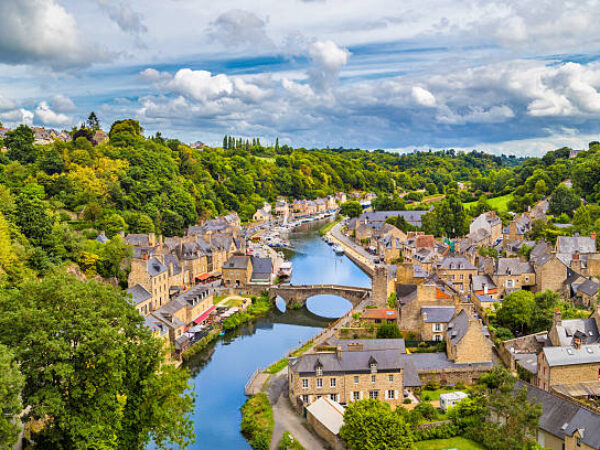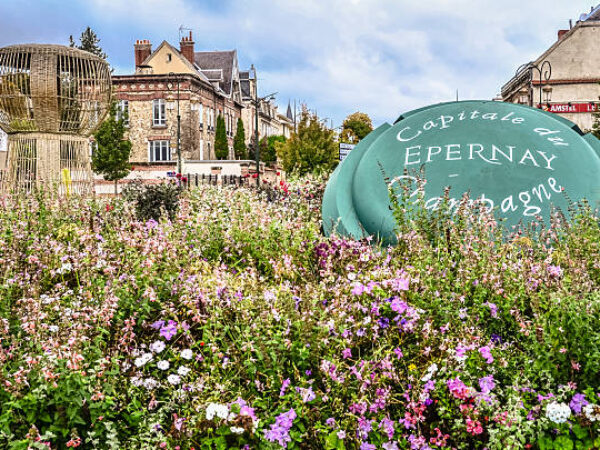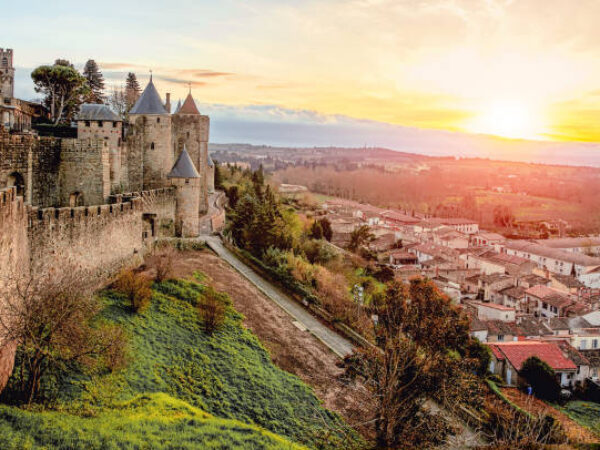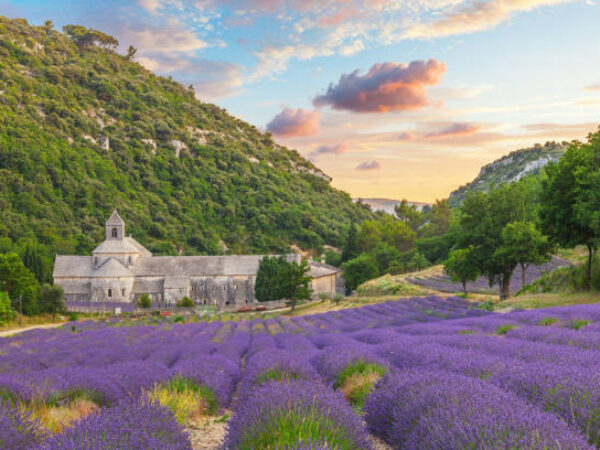Loading available options...
- Duration:10 days 9 nights
- Tour Type:Cultural and thematic tours
The number of days can also vary depending on the client's preferences.
The cost of guide and driver services, as well as hotel accommodations, are available upon request.
Tastings and entrance fees are payable on site.
Highlights
- Châteaux of the Loire Valley
- The Eighth Wonder of the World, Mont Saint-Michel
- Landscapes that inspired the Impressionists
- Tastings of the finest white wines, oysters, and cheeses
Itinerary
Expand allDay 1
Day Program:
Description:
An introduction to the Normandy region—the oldest and richest region in northwestern France.
Rouen is the historic capital of Normandy. It is home to one of France's most famous cathedrals, Notre-Dame de Rouen, celebrated by Claude Monet in a series of paintings. Narrow cobbled streets, half-timbered houses, the Gros-Horloge—an ancient astronomical clock—and the Old Market Square, where Joan of Arc was burned.
Visit to the Père Magloire Calvados production house in Pont-l'Évêque. Calvados is a strong alcoholic drink produced by distilling apple cider.
Transit through Trouville, a charming seaside town originally a fishing village that became a fashionable resort in the 19th century, to Deauville, a prestigious seaside resort and a symbol of French chic, famous for its wooden Promenade des Planches, Belle Époque architecture, casino, and golf and polo courses.
Day 2
Daily Program:
Description:
Honfleur is a picturesque medieval fishing port made famous by the Impressionists. Claude Monet spent his childhood here.
Étretat is the main natural landmark of the Alabaster Coast, where giant white chalk cliffs and arches jut into the sea, creating unique landscapes. Étretat inspired Monet, Baudelaire, and Maupassant.
Fécamp is a port, a seaside resort, a ducal town, a pilgrimage site, an arts center, and the home of the Benedictine Palace (Palais Bénédictine), where the legendary Bénédictine liqueur is crafted using more than 20 herbs and spices according to a secret monastic recipe.
Day 3
Daily Program:
- Livarot Cheese Factory
- Mont-Saint-Michel Abbey
- Cancale
- Dinard
Description of Place/Excursion:
A visit to the Livarot cheese factory is possible en route to Mont Saint-Michel, which straddles the border between Brittany and Normandy. Mont Saint-Michel is an island monastery and one of the most important pilgrimage sites.
Cancale is a small port town on the coast of Brittany, known throughout France as the "oyster capital." Oysters grown here are naturally grown and considered among the finest. The town is famous for its coastal scenery, seafood market, and views of Mont Saint-Michel from the promenade.
Dinard is an elegant resort located opposite Saint-Malo. Renowned for its Belle Époque villas, picturesque coastal paths, and sandy beaches, Dinard has been considered one of France's most prestigious resorts since the late 19th century, attracting an artistic and aristocratic crowd. The promenade offers panoramic views of the bay and Saint-Malo.
Day 4
Day Program:
Brittany Region:
- Saint-Malo
- Perros-Guirec
Description
Saint-Malo marks the beginning of France's famous Emerald Coast. Saint-Malo is known for its mighty granite walls surrounding the Old Town. In the past, it was a haven for corsairs—official pirates operating on behalf of the French crown. A walk along the ramparts offers picturesque views of the sea and islands. The town boasts narrow streets, historic buildings, the Cathedral of St. Vincent, and a picturesque promenade.
Perros-Guirec is a seaside resort in northern Brittany, famous for its pink granite coastline (Côte de Granit Rose). This picturesque stretch of coastline boasts unique rock formations of fantastic shapes and hues, which turn pink at sunset.
Day 5
Daily Program:
- Carnac
- Guérande
- La Baule
Description:
Carnac is one of the most important prehistoric sites in Europe, renowned for its megaliths. It is home to the world's largest concentration of stone menhirs—more than 3,000 upright stones erected during the Neolithic era. Carnac is also attractive for its sandy beaches and ancient atmosphere, combined with the resort spirit of Brittany.
Guérande is a medieval town surrounded by well-preserved fortified walls. It is famous for its salt fields, where Guérande sea salt, one of the most valuable in France, has been mined since ancient times. The old town charms with cobbled streets, a Gothic church, and artisan shops.
La Baule is a prestigious Atlantic resort with one of the longest sandy beaches in Europe (over 9 km). The resort has been popular since the late 19th century thanks to its mild climate, elegant villas, and well-developed tourist infrastructure. It is a wonderful place for seaside recreation, walking, and cycling.
Day 6
Daily Program (briefly):
- Nantes
- Angers Castle
- Saumur Castle
- Chevrerie Ory Farm (en route, upon request)
- Fontevraud Abbey
Description:
Nantes is the former capital of Brittany, a city of art, innovation, and a vibrant urban culture where history harmoniously blends with modernity. It is home to the Château des Ducs de Bretagne, historic quarters, and the Gothic Cathedral of Saints Peter and Paul. The Machines of the Island (Les Machines de l’île), a fantastical park of mechanical creatures, including a giant elephant, adds a special atmosphere.
Most of the interesting castles in the Loire Valley are located in the area of the towns of Angers, Saumur, Tours, and Blois.
The Château d'Angers is a powerful fortress with seventeen towers, housing a unique work of medieval art—the Tenture de l'Apocalypse, the largest and oldest tapestry in France. Angers's old town is also known for its Gothic architecture, narrow streets, the Cathedral of Saint-Mauritius, and the atmospheric embankments of the River Maine.
Saumur is a picturesque town on the banks of the Loire, famous for its seemingly floating castle overlooking the river—a symbol of French Gothic and Renaissance architecture, originally built as a fortress and later converted into a royal residence. Saumur is also renowned as the region's winemaking center, producing sparkling wines and boasting numerous wineries in the surrounding area. The town is also renowned for its national equestrian school, Cadre Noir, and its rich historical heritage. Along the way, you can visit the goat cheese farm, Chevrerie Ory – La Ferme de la Picotière.
Fontevraud Abbey (Fontevraud-l'Abbaye) is famous for being the resting place of Richard the Lionheart, his father, Henry Plantagenet, and his mother, Eleanor of Aquitaine, in this meticulously restored monastery complex.
Day 7
Day Program:
- Brézé Castle
- Chinon Castle
- Azay-le-Rideau Castle
- Villandry Castle
- Alternative: Langeais Castle and Ussé Castle
Description:
Brézé Castle is known as the most important underground fortress in France. In addition to its elegant Renaissance-style residence above ground, Brézé Castle impresses with its extensive system of underground galleries, corridors, and wine cellars.
A stop in Chinon is also possible, along with a visit to the castle of the same name, where Joan of Arc met King Charles VII in 1429.
Azay-le-Rideau Castle (Château d'Azay-le-Rideau) is one of the masterpieces of French Renaissance architecture, built in the first half of the 16th century on an island in the river.
Villandry Castle (Château de Villandry) – its main claim to fame is its outstanding gardens, recognized as some of the most beautiful in France.
Alternatively, you can include Langeais Castle (Château de Langeais) in your itinerary – one of the best-preserved medieval castles in the Loire. In 1491, the wedding of King Charles VIII and Anne of Brittany took place here, playing a key role in the unification of France and Brittany.
Ussé Castle (Château d'Ussé) is one of the most romantic castles in the Loire Valley, inspiring Charles Perrault's fairy tale "Sleeping Beauty." Built in the 15th–17th centuries, it combines Gothic and Renaissance elements.
Day 8
Daily Program:
- Tours
- Amboise Castle
- Clos Lucé Castle
- Château de Chenonceaux
- Alternative: Chaumont Castle and Château de Valmer
Description of the location/excursion:
Tours is the largest city in the region and home to France's oldest central square.
Amboise Castle (Château d'Amboise) is a royal palace recognized as a marvel of Renaissance and Gothic architecture. The castle is considered one of the most majestic in the Loire Valley.
500 meters from the castle is Clos Lucé, where Leonardo da Vinci spent the last three years of his life. Models created from his designs are on display in the museum.
Chenonceaux is one of the most visited châteaux in the Loire, linked to Diane de Poitiers and Catherine de Medici.
Alternatively, a visit to Chaumont Château, home to the annual International Garden Festival, and Château de Valmer, renowned for its parks and Vouvray winery, can be included.
Day 9
Daily Program:
Description:
Helicopter tour over the region's châteaux. Experience a bird's-eye view of the most picturesque château complexes. Flight duration: 30 minutes to 1 hour 35 minutes. Landing at one of the château-hotels is optional, along with a champagne aperitif.
Chambord Château (Château de Chambord), the hunting lodge of King Francis I, is impressive in its scale: over 400 rooms, 80 staircases, and 365 fireplaces. Its double-spiral staircase, said to be based on designs by Leonardo da Vinci, is an engineering marvel of its time.
Blois Château. Its architecture is an encyclopedia of French styles, from Gothic to Classical, with four facades, each reflecting the era of its construction. Another landmark of the Château de Blois is its tower with a spiral staircase, which Balzac called a "Chinese pagoda."
Alternative: Château de Cheverny is one of the most elegant and beautifully preserved châteaux in the Loire Valley, a private residence in the same family for over six centuries. Particularly renowned are its armory gallery and children's room with 19th-century toys.
Day 10
Day Program:
- Orléans
- Chartres
Description
Orléans is the city where the liberation of France from the English began in 1429, led by the Maid of Orleans.
Chartres is home to Chartres Cathedral, one of the greatest achievements of Gothic architecture and Christian culture of the Middle Ages.
See more excursions
You might also like...
Login to use
Traveling through the Loire Valley
Location
Duration
Magnificent royal castles, mysterious troglodyte dwellings, exceptional wines,...
Login to use
Southwest France Wine and Food Tour
Location
Duration
Medieval chateaux and endless beaches, world-famous wines of...
Login to use
Travel “Normandy – Brittany”
Location
Duration
The rugged beauty of Breton nature, Mont Saint-Michel...
Login to use
Champagne, Burgundy, Rhône-Alpes – the heart of France
Location
Duration
Oak groves and endless vineyards, Gallo-Roman ruins and...
Login to use
Carcassonne and the Land of the Cathars
Location
Duration
Home See more excursions Ним Окситания Франция Ним...
Login to use
Traveling through Provence
Location
Duration
Home For Booking Need help? Talk to an...














